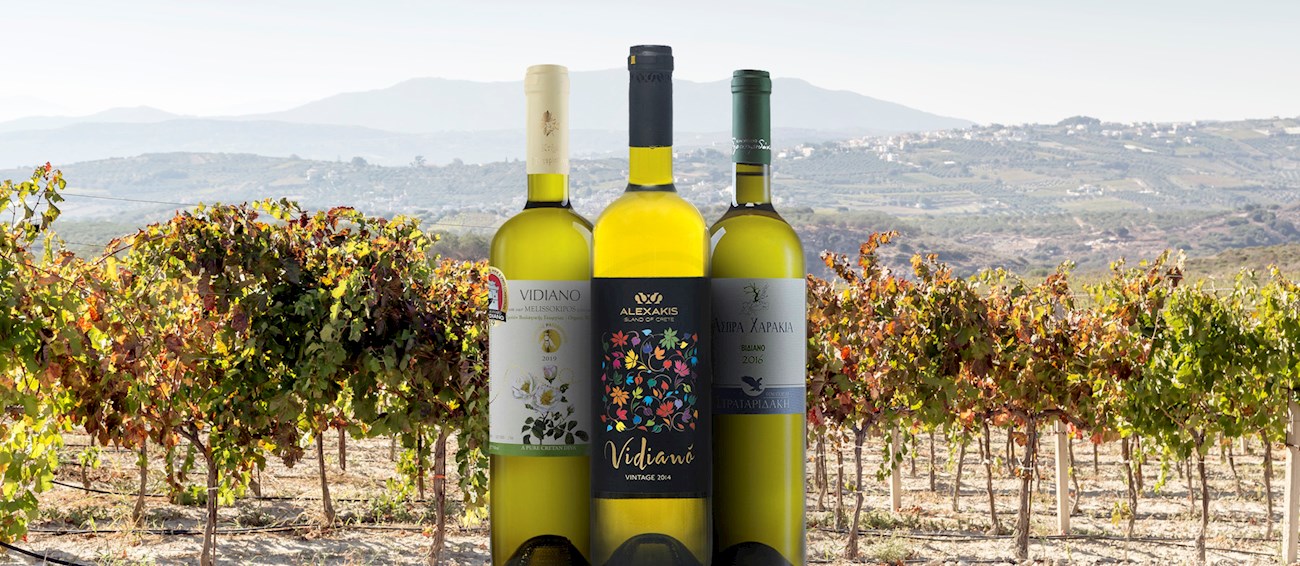Savatiano is a white grape native to Greece, where it is used in varietal and blends. It was mostly used for unimpressive and bland table wines and the somewhat infamous Greek retsina—wine flavored with pine tree resin. Savatiano is still one of the most popular varieties, but producers now usually turn to quality rather than quantity.
By choosing cooler sites and earlier harvesting, winemakers allow the grape to retain acidity. Along with this shift, varietal Savatiano has become more prominent on the market. Dry Savatiano wines have citrus, apple, and floral notes, along with medium-body and medium to low acidity.
Vidiano is a native white grape from Crete that is mostly cultivated around Rethymnon. The grape is not widely known, but it has seen an upsurge in popularity in the last decade. It is usually used in varietal examples that are typically high in alcohol and acidity.
The wines are usually straw-colored and tend to turn darker with age. They have a rich and creamy texture, while the aroma is reminiscent of melon, apricot, and quince, sometimes with subtle floral notes. They will often have hints of spice and minerality.
Kidonitsa is a rare and ancient Greek grape that was once nearly extinct. It was saved by several producers from the Peloponnese region who realized that the grape has an excellent potential to produce aromatic white wines with a unique character.
The wines are still rare, and most of them come from Laconia. Dry white wines made from Kidonitsa usually have an approachable character. They are bright yellow and aromatic with crisp acidity and a round, medium body. Most examples have a quince-like note—unsurprisingly, the name of the grape derives from the Greek name for quince (kydoni)—along with some floral and citrus notes.
TasteAtlas food rankings are based on the ratings of the TasteAtlas audience, with a series of mechanisms that recognize real users and that ignore bot, nationalist or local patriotic ratings, and give additional value to the ratings of users that the system recognizes as knowledgeable. TasteAtlas Rankings should not be seen as the final global conclusion about food. Their purpose is to promote excellent local foods, instill pride in traditional dishes, and arouse curiosity about dishes you haven’t tried.



